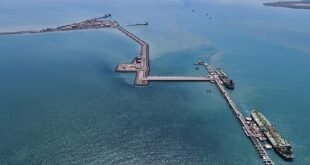30-07-2022
WASHINGTON: The unexplained holes were discovered and photographed on Saturday by a remotely operated submersible as part of National Oceanic and Atmospheric Administration’s  (NOAA) second Voyage to the Ridge 2022 expedition in which scientists are exploring and mapping the Mid-Atlantic Ridge, an immense underwater mountain range, north of the Azores archipelago.
(NOAA) second Voyage to the Ridge 2022 expedition in which scientists are exploring and mapping the Mid-Atlantic Ridge, an immense underwater mountain range, north of the Azores archipelago.
An Unexpected Discovery
During a dive on Saturday, NOAA scientists probed the ocean floor at depths of approximately 1.6 miles while visiting the summit of an underwater volcano north of the Azores, an autonomous region of Portugal in the mid-Atlantic.
They used a remotely operated camera to record the perfectly-aligned holes in the seabed. The holes, neatly arranged in a straight line, were observed more than a mile under the ocean surface near the Azores.
According to a post on the NOAA website, scientists attempted but were unable to take a look inside the holes and “poke them” with tools on the remotely operated vehicle.
 Crowdsourcing for Explanations
Crowdsourcing for Explanations
Scientists were left so baffled by the discovery that they invited members of the public to offer their theories on the origins of the inexplicable holes.
“On Saturday’s Okeanos dive, we saw several sublinear sets of holes in the seafloor. The origin of the holes has scientists stumped. The holes look human-made, but the little piles of sediment around them suggest they were excavated by something,” NOAA Ocean Exploration, which is dedicated to exploring the global ocean, says in a tweet on Monday.
The scientists then call on Twitter users to help them identify the unique indentations, asking “What’s your hypothesis?”
The NOAA received a variety of responses from social media users, from aliens, to an unknown crab species, to gas rising up from below the seafloor.
The Mid-Atlantic Range spans the north-south length of the Atlantic Ocean and stretches for  10,000 miles, making it the longest mountain range in the world and one of Earth’s most impressive geological features. Since most of it sits underwater, it remains largely unexplored and therefore poorly understood.
10,000 miles, making it the longest mountain range in the world and one of Earth’s most impressive geological features. Since most of it sits underwater, it remains largely unexplored and therefore poorly understood.
Scientists previously reported the discovery of similar tracks of holes in the same region in 2003. However, the previous researchers were as stumped as the current NOAA expedition team about their origins and the holes remain a mystery. The current belief, however, is that the holes are “biological in origin.”
“(While) scientists are not sure how the holes form, they hypothesize that the holes are likely biological in origin, using the term ‘lebensspuren,’ which translates to ‘life traces,’ to describe the holes,” NOAA writes. (Int’l Monitoring Desk)
 Pressmediaofindia
Pressmediaofindia




